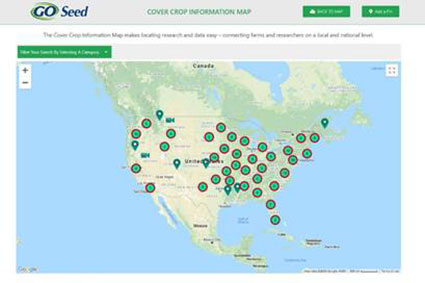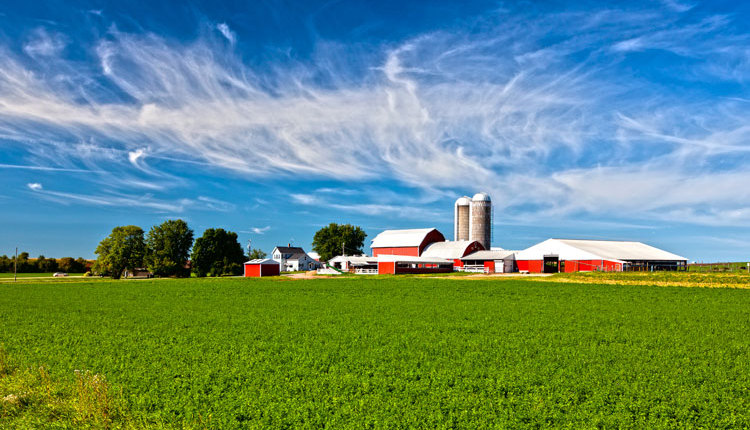
“The Cover Crop Information Map is a free resource for agricultural producers, researchers and industry influencers wanting access to unfiltered, raw research data and methodology to help them translate and apply findings to their own trials and practices,” says Jerry Hall, director of research for GO SEED.
Found on gocovercrops.com and featuring an interactive map of the United States, users can narrow down available research and farm trial findings based on their geographical region and topic of interest. For example, clicking on the topic section ‘Nutrient Management’ drops pins on the map where research and trials pertain to this topic. Clicking on an individual pin will take users to a summary page highlighting what the study was about before taking them to the full literature.
“The Cover Crop Information Map currently has more than 200 pieces of research and trial summaries on 26 different topics such as compaction, forage for livestock and planting green. While the platform will be continued to be populated with previously published work, it also features the ability to add a pin, allowing individuals to add their own research and trial findings,” says Hall.
For the last 10 years, Rick Clark of Clark Land and Cattle near Williamsport, Ind., has been integrating cover crops into his 7,000-acre corn and soybean farm to reduce inputs. His continued learning and adaptation of practices has resulted in a zero-fertilizer input system and a nearly 50 percent decrease in farm diesel since 2011 without jeopardizing yield. An adamant proponent of planting green into living cover crops to maximize their nutrient contribution potential, Clark’s data is featured on the Cover Crop Information Map.
“This platform is a great resource for producers wanting to get an idea of what is possible through the use of cover crops whether it be looking at published research or feature farm trials,” explains Clark. “The raw data provided will allow producers to adapt findings and management practices to suit their own unique geographical challenges and business needs to have greater success with their cover crops.”
For Illinois corn and soybean farmer Andrew Reuschel of Reuschel Farms, the Cover Crop Information Map will be a useful tool to learn how other producers throughout the country are utilizing cover crops. A Soil Health Partnership Farmer, Reuschel and his father have been utilizing cover crops for nearly 20 years on their 1,200-acre farm near Golden.
“We started with a very conservative approach to cover crops by planting cereal rye before soybeans to help control erosion. For a long time, we were like a ship without a compass – it took us a while to figure things out. Fast forward to present day and we are planting our corn and soybeans green, inter-seeding into corn and utilizing mixes with up to 30 species. This has been a gradual process through speaking to other farmers about their experiences and then implementing multiple farm trials to find out what worked best for our system,” says Reuschel. “I’m excited this resource has been developed to help educate people about what can be achieved with cover crops, and more importantly, linking them to on-farm implementation.”
According to Rob Myers, Ph.D., a University of Missouri agronomist and regional director of extension programs for Sustainable Agriculture Research and Education (SARE), the Cover Crop Information Map provides a unique opportunity for users to identify research in their own area.
“The Cover Crop Information Map has very helpful links to some of the research projects conducted on cover crops across the U.S. This should be a good resource for anyone seeking information on cover crops for their particular region or who wants to look at a sampling of cover crop projects from across the country,” says Dr. Myers.

With a significant proportion of research being hosted behind paywalls, Hall says the Cover Crop Information Map will allow farmers to see what kind of research is being conducted outside their immediate area.
“It is our hope and desire that the Cover Crop Information Map on gocovercrops.com can bring more transparency and, as a result, will lead to even greater creativity in future research projects both at the university and on the farm. By sharing knowledge, we all can learn so much more,” concludes Hall.
To visit the Cover Crop Information Map, go to gocovercrops.com.










